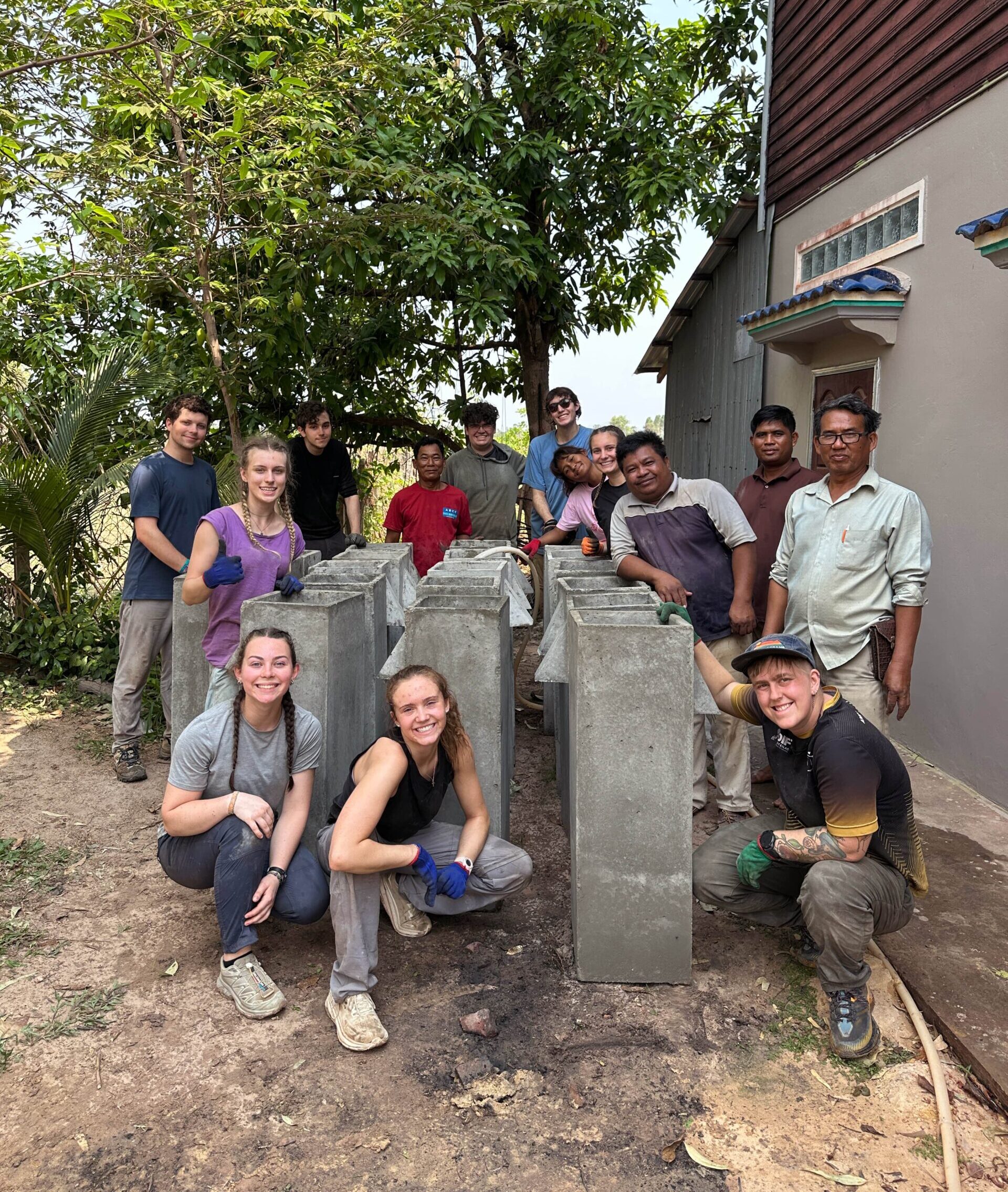Our travels take us to bustling cities as well as places off the beaten path. In exchange for the privilege of getting to know these new places, we aim to engage in meaningful service-learning projects while we travel. And if we’re lucky, we get to spend time living with those we meet and learning from each other about different ways of life.
The Water Filter Project
During the Southeast Asia Gap Semester, students had the opportunity to engage in a service-learning project in the rural Cambodian community of Tbaeng. This project is the baby of our partner, Lav Vey, our guide throughout our stay in Cambodia. We had just spent the previous week with him visiting Tuol Sleng, the Killing Fields, and learning about the tragic recent history of the Cambodian Genocide. In part due to this genocide and the coinciding lack of infrastructure development, Cambodia remains one of the poorest countries in Asia.
Despite the troubled past of Cambodia, we found an abundance of warmth from our hosts and a desire to share in the community work, even with foreigners who couldn’t speak their language. When we arrived in Tbaeng, we were quickly met with many locals who lent their tools and knowledge to build 19 water filters and install 8 filters in local homes.
In Yale University’s Environmental Performance Index, Cambodia only scored 33 out of 100 for the quality of drinking water. While certainly not the only country to get a low score, it is quite shocking when compared to the United States’ 89 out of 100 score, and even more shocking when compared to many European countries’ 100 out of 100 score. This shows the necessity of projects to improve the quality of drinking water (and therefore improve public health) in Cambodia!
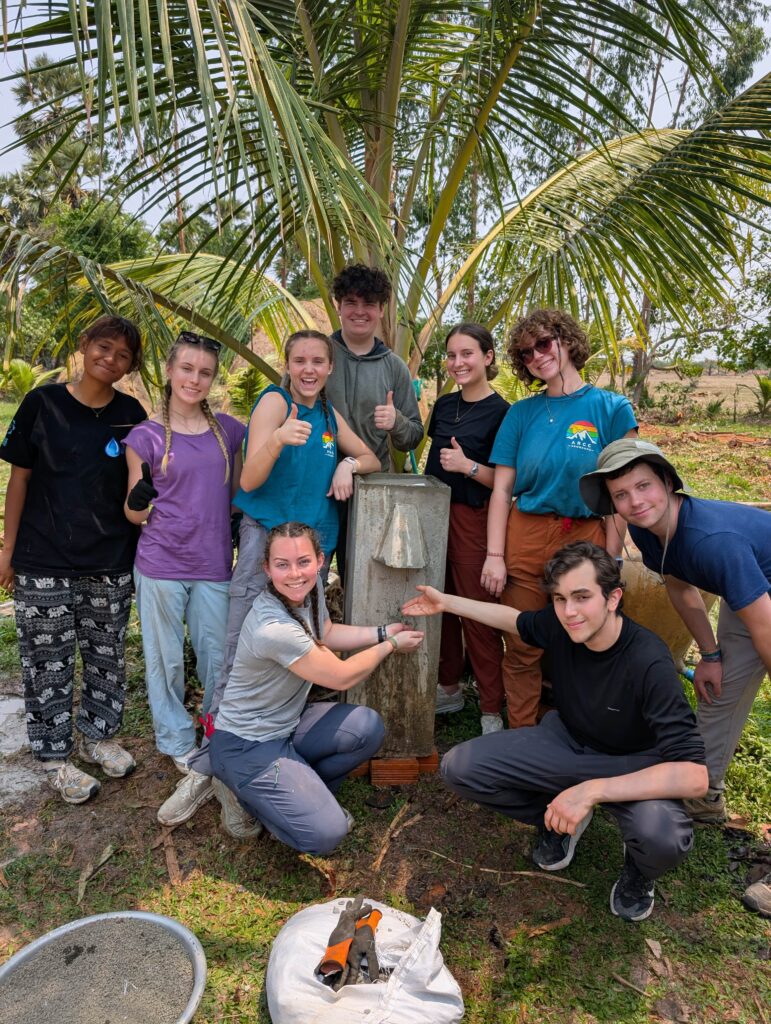
Creating Biosand Filters
Thankfully, there is an inexpensive and effective option that can easily be implemented by local communities to improve water quality: enter, the biosand filter! Biosand filters work by putting together different sizes of sand and rock to host a biofilm—aka, communities of microorganisms that help to fight bacteria and protozoa that can make us sick. By filtering water through a filter like this, most of the harmful microorganisms are removed. This has caused a measurable decrease in diarrheal diseases in households that use filters, which can be especially helpful for the health of young children.
To make the filters, we first worked with our community partners to gather the necessary supplies: concrete, metal molds, sand, gravel, and plastic tubing—all things that are easy to find and relatively inexpensive. They can be a bit heavy, though, so we used teamwork to carry all the materials!
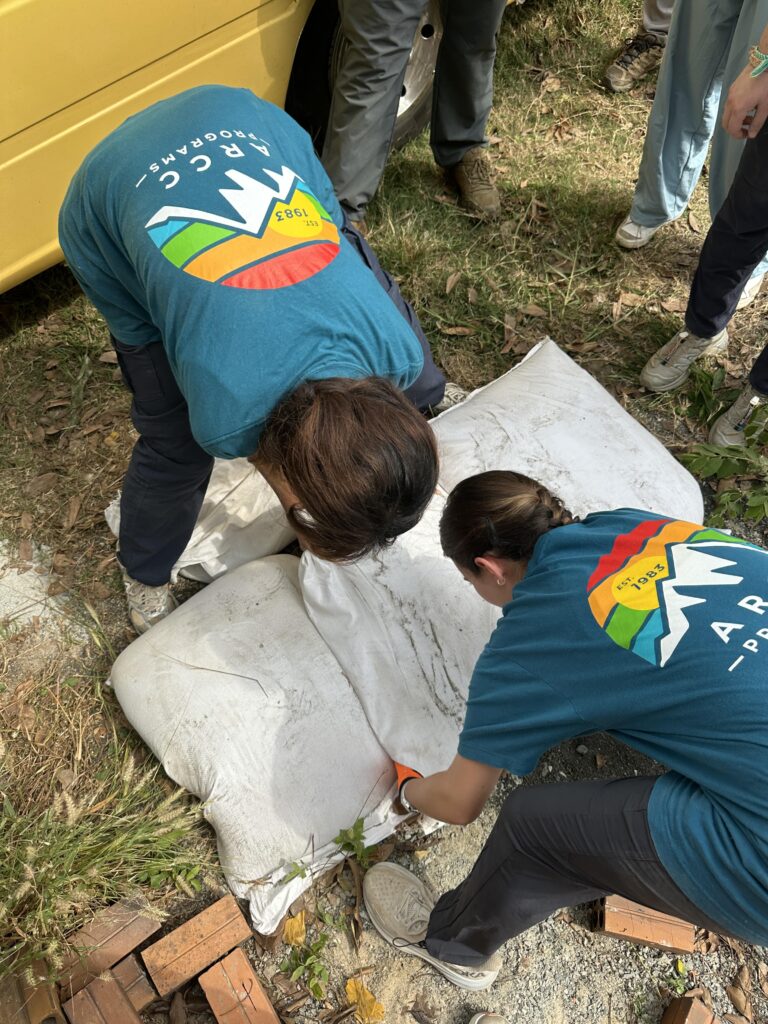
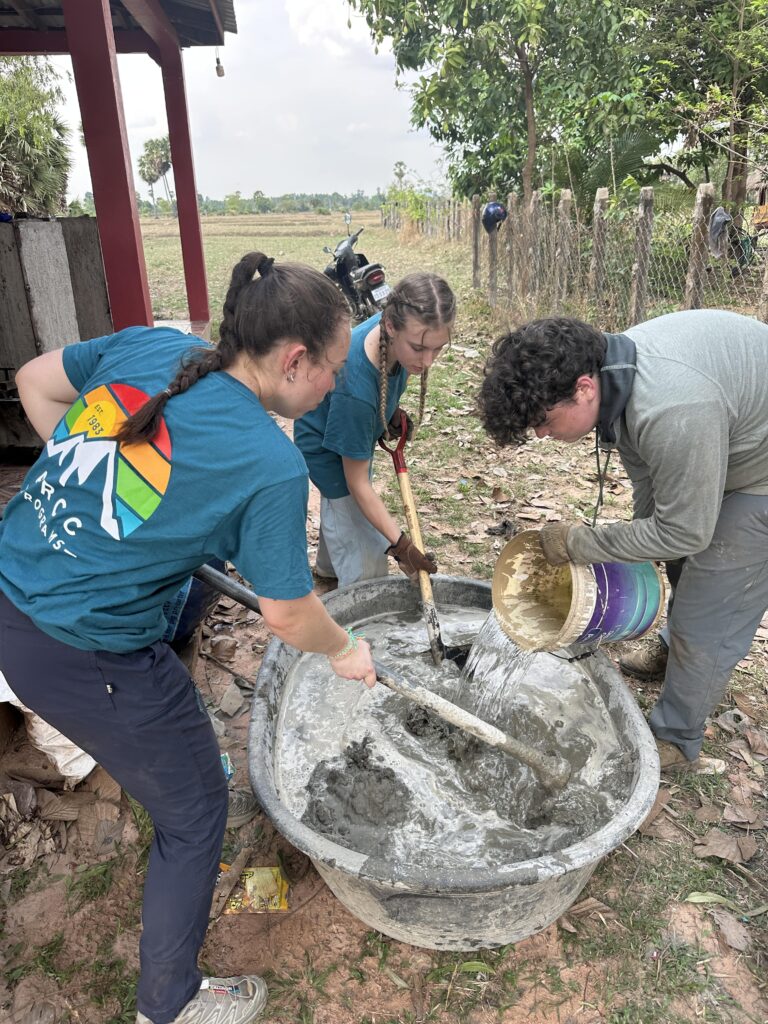
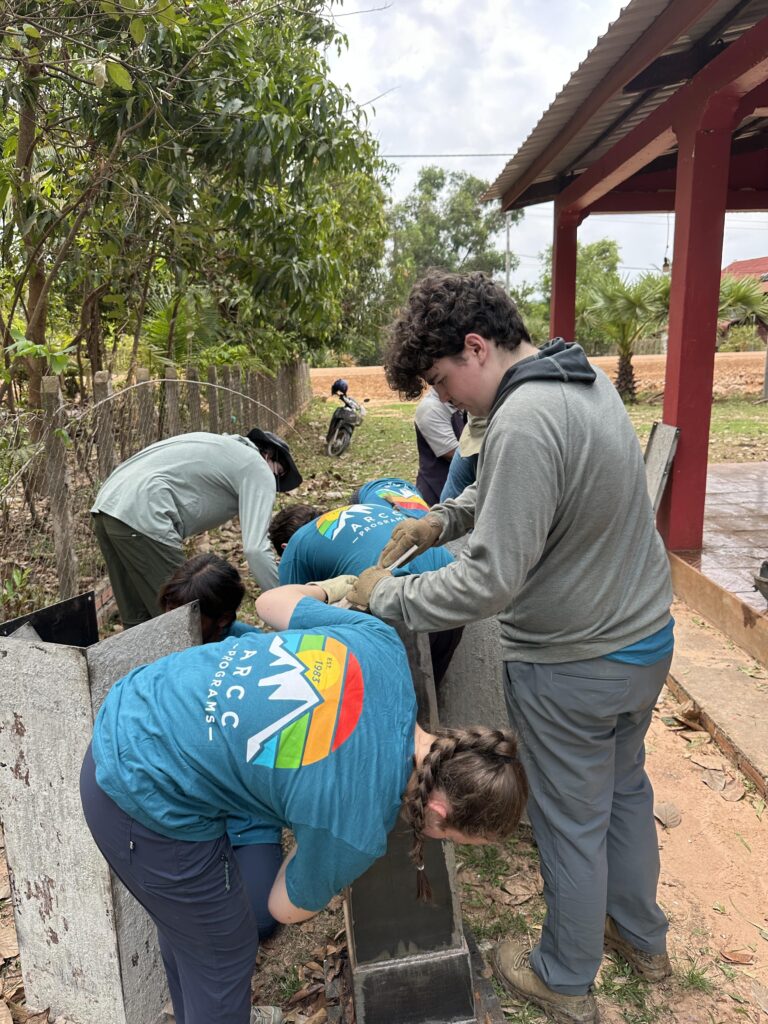



We then learned to mix the concrete in the right ratios. Community member Mr. Hing was especially helpful in directing how many bags of concrete to how much sand and water we needed. We put together 10 metal molds with nuts and bolts, making sure to brush them with cooking oil before closing them up so that taking the molds apart would be easier. We also made sure to insert a small plastic tube that will help siphon water from the bottom of the filter to an easy-to-reach spout.
After letting the molds dry overnight, we carefully unscrewed the bottom of the molds and slid the inside metal casing out. Then we repeated the process for the outside of the mold, taking care not to break the spout on the way out. Any small cracks or imperfections were patched up by Mr. Hing.
These filters need to cure for another couple of weeks, but thankfully, we had some that were created by a previous ARCC group that were ready to be installed! We loaded up the filters, sand, and gravel onto an “iron buffalo”—an ingenious tractor that can navigate the bumpy and windy roads of the community. The local community leader had made a list of houses that requested a filter be installed, so Vey directed our iron buffalo as close to these houses as possible. Then we used some elbow grease to get the filters into place!
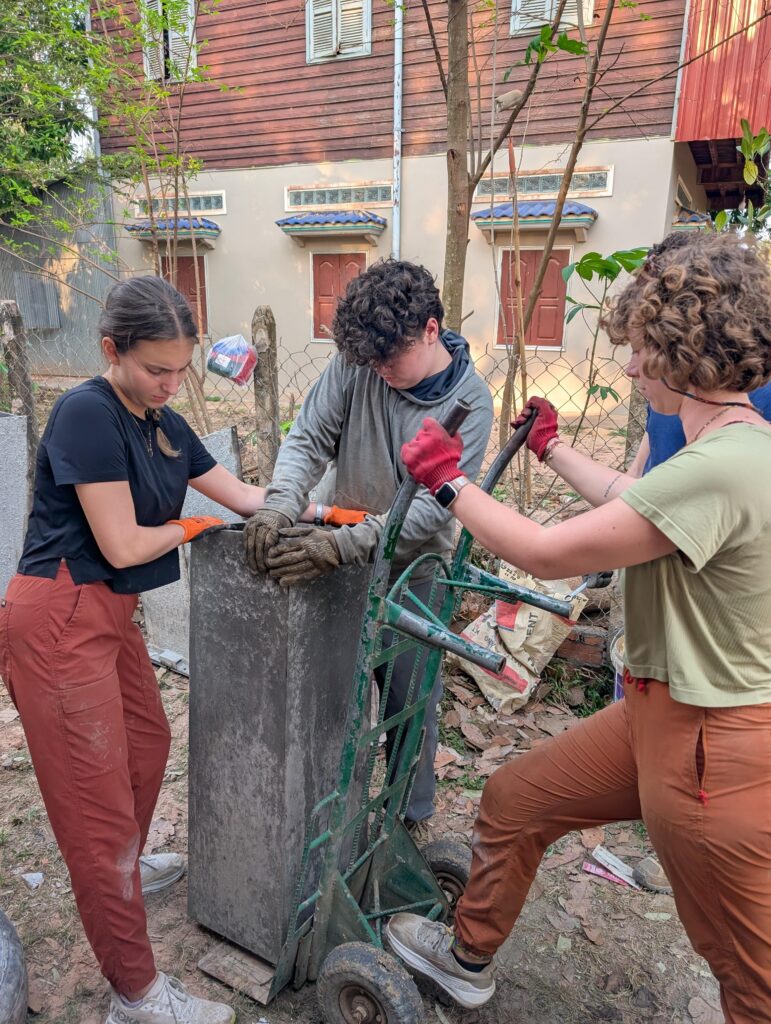
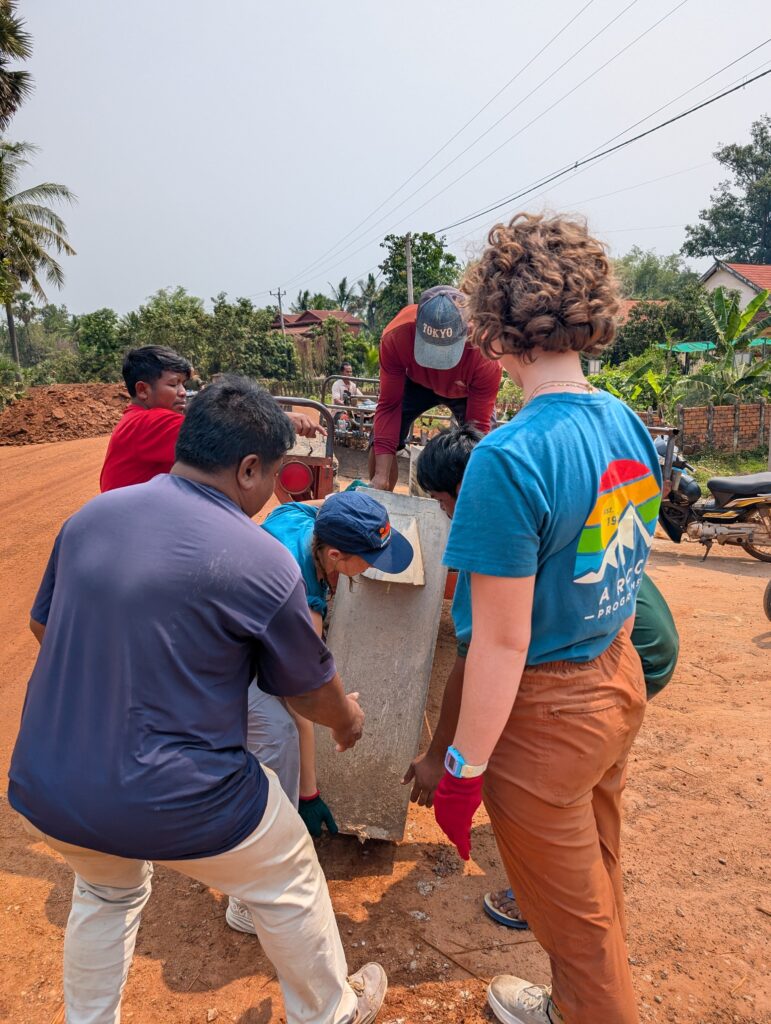

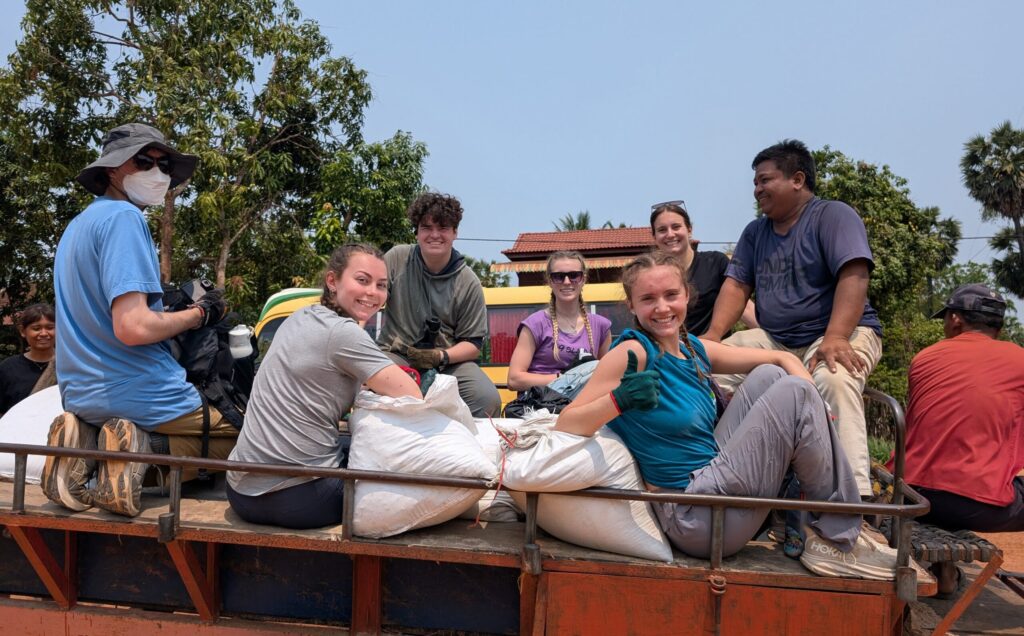
Once at each house, we filled the filters up with gravel and sand for the water to flow through. This involved washing dirt from a lot of gravel until the water ran clear. After each size of gravel was washed, we put it into the filter—first large pieces of gravel, then medium, then almost a sand-like texture. Then, we filled each filter with water, placed a lid on, and they were done! Each filter will need a few days with rounds of water run through it before it’s most effective.

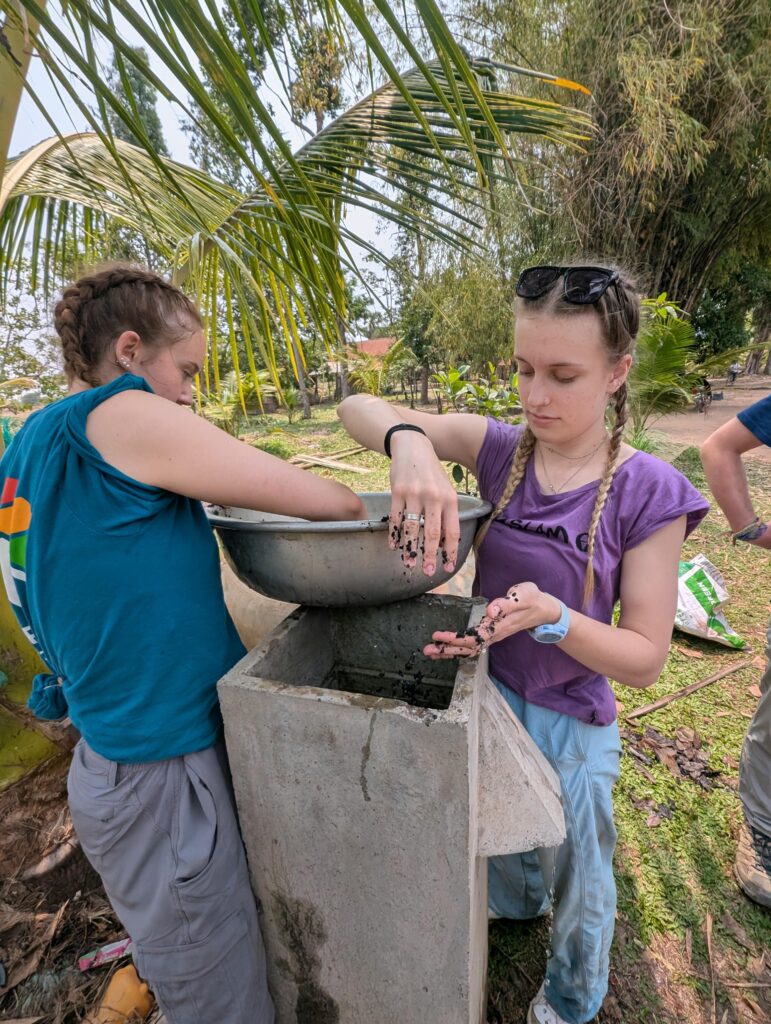

Community Through Cultural Exchange
While installing each water filter, we got an impromptu tour of many community members’ businesses and ways of life. In one household, we learned about palm sugar production, tasting fresh sap from palm trees and watching the boiling process to create a syrupy product used to sweeten dishes. In another household, we met an entrepreneurial woman who makes and sells rice noodles to the whole community. She actually already had a water filter, but needed another to be able to ramp up her production—she says that water from the filters makes the noodles taste extra good! We got to sample her product, and can confirm they are delicious :).
All along the way, we met kids on their school breaks who practiced their English with us, and also met a variety of farm animals—pigs, chickens, ducks, and dogs! We often switched off who was washing gravel and who was meeting the local “worker.”

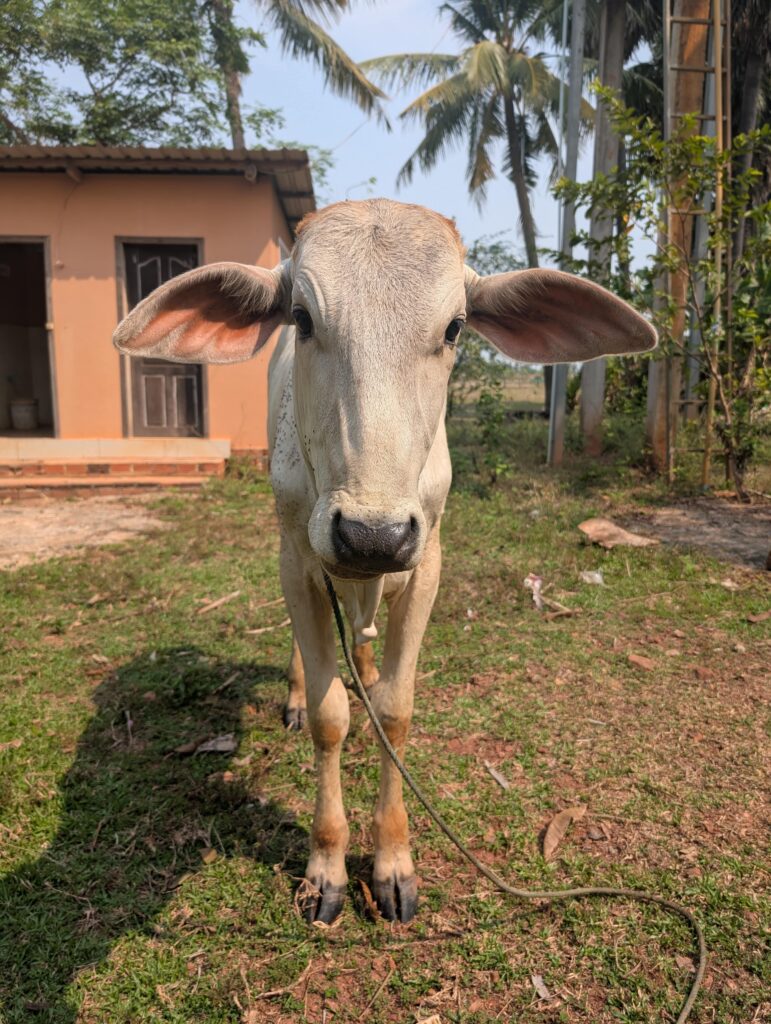

As we worked, many community members pitched in—bringing us snacks of fresh bananas, helping move bags or hoses to supply water, and listening intently as Vey explained in Khmer the installation process and upkeep that each filter would need.
Our hosts in the community were so gracious, feeding and housing us for three nights as we installed filters and learned about their community. We loved having a delicious meal served each night from the family of the community leader!
More than a Service Project
When we engage in service during an ARCC program, we always make sure to critically analyze our role in the community before, during, and after the project. Rather than viewing ourselves as foreigners coming in to “serve” an “underserved community,” we frame our work as “Project-Based Learning.” We aim to support projects that function in sustainable ways—they have community leadership, diverse sources of funding, measurable goals and outcomes, and support new jobs rather than replace jobs within the local community. We are well aware we are not experts in concrete mixing or filter installation, which is why we make sure to partner with organizations that employ community members to teach us and direct the process.
Coming into Tbaeng, we know we’re not providing water knowledge that the communities don’t already have. Rather, we hope that with our manual labor and money invested, we can support the work that is already happening, expanding the project to include even more households. Additionally, we aim to learn from community members about both their experience with water as well as their day-to-day life. If we share ourselves, it’s our experience as foreigners—our games, our language, and our community. Through this exchange, we hope that both our students and the community members enjoy a new experience that benefits all.
After our short stay in Tbeng, Vey and local community members will remain nearby to continue the installation and maintenance process of the water filters. After returning home, we will remain with new connections and experiences, as well as the desire to advocate on behalf of our community partners in Cambodia when policies affecting public health in other nations are proposed in our home countries.

